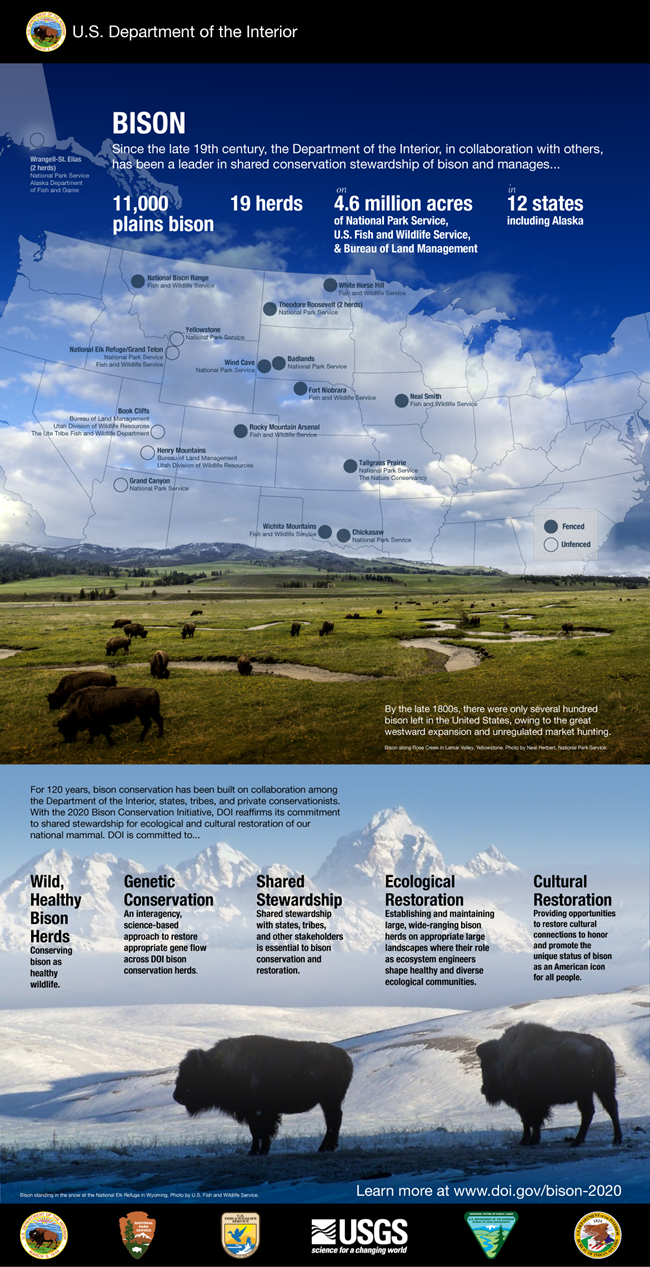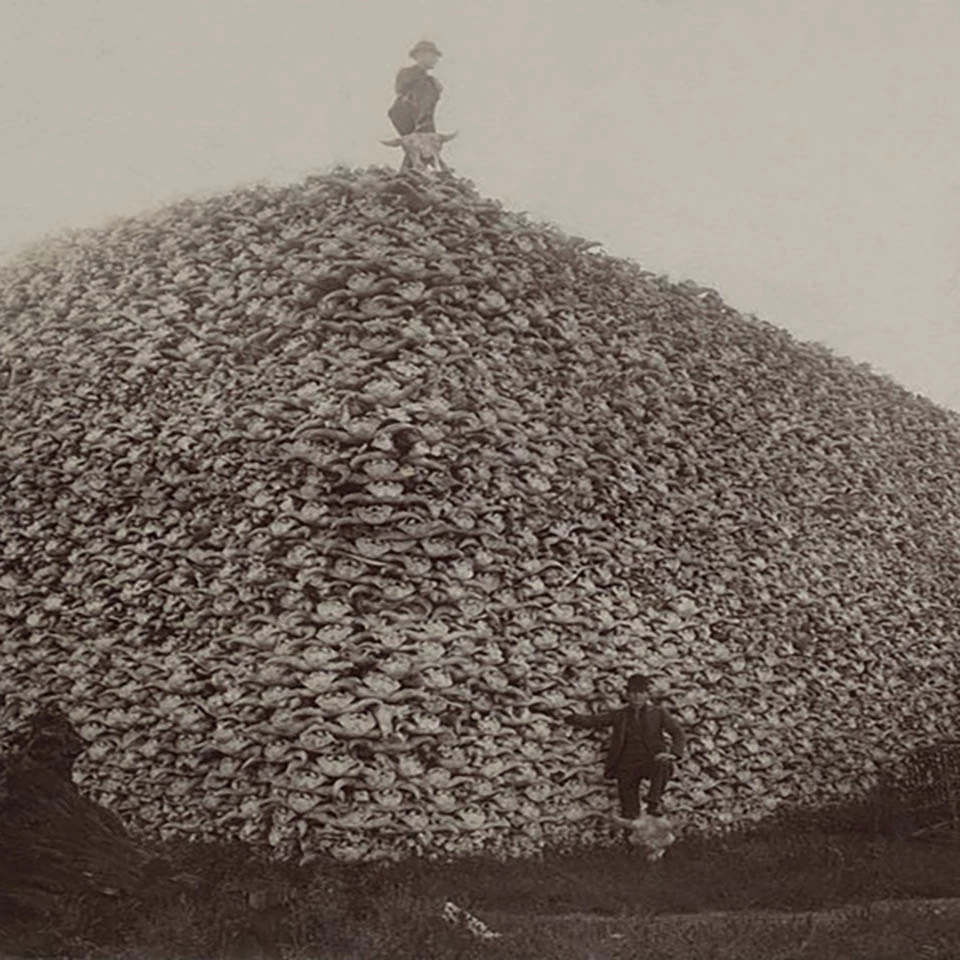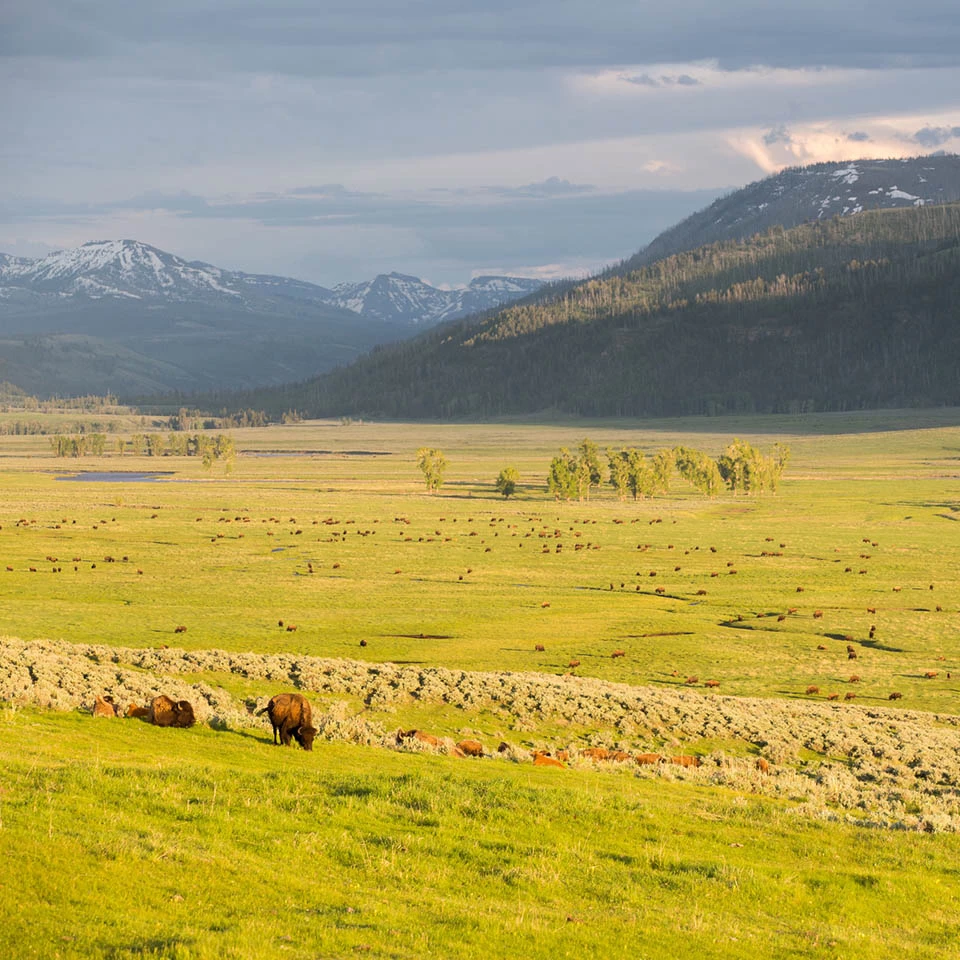
Current Conservation Status
Today, the Department of the Interior (DOI) supports 19 bison herds in 12 states, for a total of approximately 11,000 bison over 4.6 million acres of DOI and adjacent lands. DOI bison resources, whose total population accounts for one-third of all bison managed for conservation in North America, are crucial to the long-term preservation of the species, and DOI bison managers work with other bison conservation partners, including Native American tribes and Canadian First Nations, state wildlife management agencies, zoos, academic institutions, Canadian and Mexican wildlife management agencies, and non-governmental organizations to share the stewardship of bison across North America.The 2020 DOI Bison Conservation Initiative's goals:
- Wild, Healthy Bison Herds: A DOI commitment to conserve bison as healthy wildlife.
- Genetic Conservation: A DOI commitment to an interagency, science-based approach to support genetic diversity across DOI bison conservation herds.
- Shared Stewardship: A DOI commitment to shared stewardship of wild bison in cooperation with states, tribes, and other stakeholders.
- Ecological Restoration: A DOI commitment to establish and maintain large, wide-ranging bison herds on appropriate large landscapes where their role as ecosystem engineers shape healthy and diverse ecological communities.
- Cultural Restoration: A DOI commitment to restore cultural connections to honor and promote the unique status of bison as an American icon for all people.
For additional information about the science, benefits, and goals of bison transfers, see the population viability analysis listed below that was conducted by the Wildlife Conservation Society, NPS, and the U.S. Fish and Wildlife Service.
Read also: A Metapopulation Strategy to Support Long Term Conservation of Genetic Diversity in Department of the Interior Bison
Learn about the DOI's commitment to
Bison Shared StewardshipRelevant Articles on the Initiative
A Century of Restoration
Explore this page to learn about the current status and challenges, as well as recent scientific studies happening in national parks today!


Left image
A famous, historic photo showing bison hunters atop a pile of hundreds of bison skulls
Right image
Yellowstone National Park's Lamar Valley, where bison once again populate the land
Conservation Challenges
The National Park Service is working with a myriad of bison partners to collect scientific data of the current state of DOI bison herds in order to model future management scenarios aiming to maximize the conservation value of DOI bison herds in the context of continental-wide species recovery efforts. This science-based collaboration will be helpful in determining the feasibility of reestablishing the ecological role of bison as a free-ranging keystone herbivore when and where it may be suitable—with respect to individual agency missions and objectives—and developing collaborative stewardship opportunities to ensure the ongoing restoration of wild bison.
National park biologists work to find solutions to conservation challenges everyday. Check out science in action, below!
- Duration:
- 4 minutes, 3 seconds
The National Park Service manages 9,700 bison in 10 national park units. In 2017, bison were moved from Badlands National Park to Theodore Roosevelt National Park as part of a long-term genetic experiment.
Last updated: July 14, 2025
